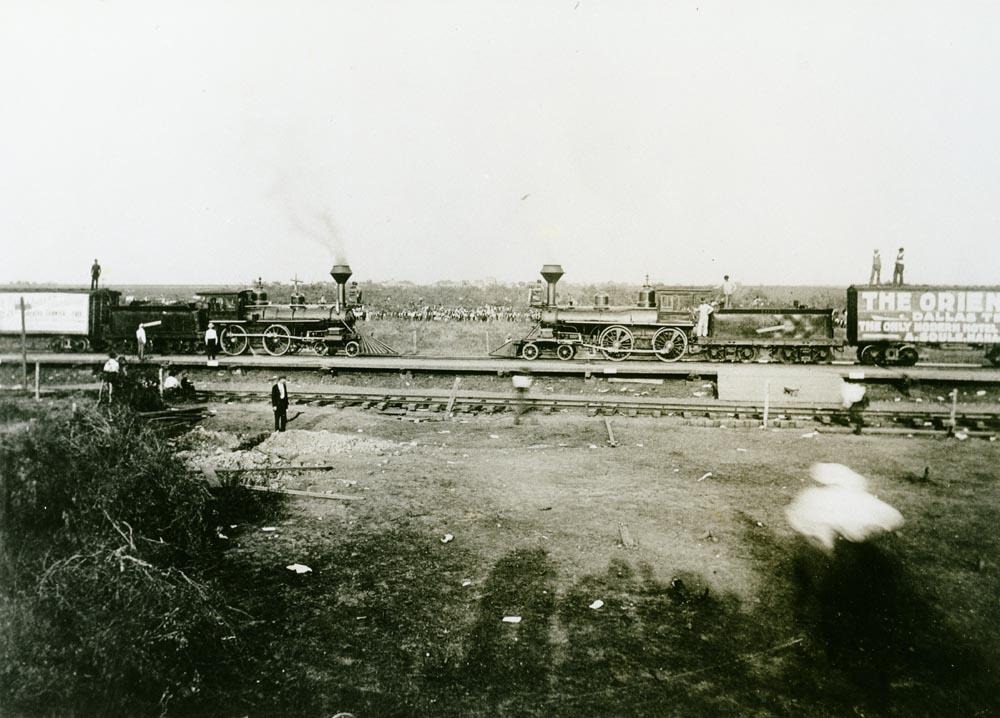Some publicity stunts can be complete train wrecks.
Then, there are train wrecks thatarepublicity stunts.
The same cannot be said for William George Crush, the marketing manager of the Missouri-Kansas-Texas Railway.
Railway crews pose with the two locomotives in 1896 near Waco, Texas, before the staged crash.
Crush managed to win the confidence of his superiors, and the project was given a go-ahead.
The place was given the temporary name of Crush.
Some 300 policemen had to be brought in to keep order.
It was estimated that each train was going at about 45 miles per hour at the moment of impact.
But then something unexpected happened.
Flying metal debris killed two young men and women.
An official photographer lost an eye to a steel bolt.
He worked for the company for 57 years until his retirement.
Curiously, the tragedy didnt spell the end of fairs crashing locomotives for entertainment.
On the contrary, it started it.
For the next three decades more than a hundred crashes were orchestrated at state fairs across the United States.
Nowadays people go to demolition derbies.
Thousands of onlookers swarm over the wreckage of the Crush train crash hoping to collect souvenirs.
The original train crash in Lancaster, Ohio, in July 1896 that inspired William Crush.
Photo credit: H.F. Pierson/Library of Congress
Video of the 1913 staged train crash in California State Fair.





